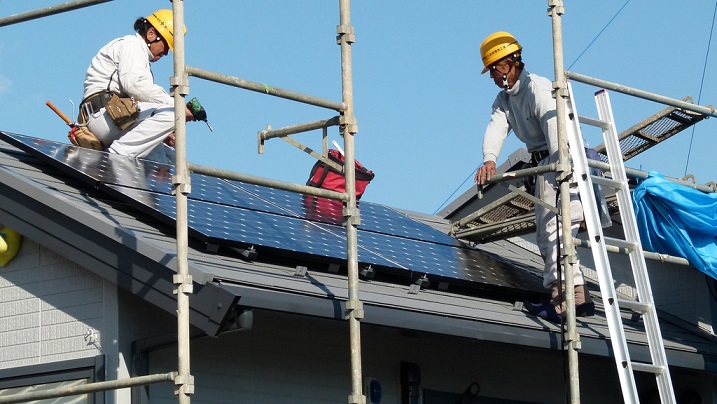The challenge of mainstream solar power systems lies in the fact that not many people have done it, and even fewer people can tell you how the process works or what to expect. Although the cost of putting solar panels on your roof is on par with the price of a new car, there aren’t yet many customers who have experience with it, and there are even fewer of those who’ve seen a solar system through its lifecycle. The fact that it’s placed on the most prominent part of your home can make things even trickier, so you can’t afford to make mistakes. Here’s a brief list of pitfalls you’ll want to avoid.

Installing new panels on an old roof
In an ideal scenario, your roof and solar array should have a similar life expectancy. Keep in mind that your solar panels might be operational for 20 years, so having them installed on a roof that can barely squeeze 10 more years of life is a dangerous gambit. Therefore make sure the solar company you choose doesn’t install solar panels on a roof that may be very old or even damaged. Trusted quality companies should tell you if your roof need repairing before the panels are installed.
Therefor make sure the solar company you choose doesn’t install the solar panels on a roof that may be very old or even damaged. Trusted quality companies should tell you if your roof need repairing before the panels are installed
Placing the panels the wrong way
If your roof is in the shade for a better part of the day all year round, it might not be easy to justify the cost of solar panels. In the northern hemisphere, panels should be oriented towards the south or west to catch the most sunshine, while south of the Equator it’s the other way round. Roofs in general aren’t designed to support the extra weight of a solar array, or the foot traffic associated with installation. In addition, mounting the panels will require a number of penetrations made into the roof, some of which might not be easy for your current roofing system to handle.
Obstructing the run-off of water
Your roofing system is designed to make it easy for water to slide down, based on your geography, climate, and the precipitation levels in your area. When solar panels are installed without accounting for the water flow, mounting racks and wiring may interrupt the flow of water, preventing the roof from draining properly.
In more severe cases, water can even be forced upwards, often resulting in a roof leak. Not to mention that ballast material can also escape and clog the drain pipes. Keep in mind that repairing the roof is much more difficult with solar panels installed, so make sure you address these issues on time.

Treating the roof like a construction site
Although today’s roof systems are made to be durable, solar installers might haul racks and panel equipment across the roof or accidentally drop tools, causing cracks and other damage. Not to mention that if you don’t clean up the leftover debris, it can clog the drains. In order to avoid this, go with the installer who understand the limits of your roofing system.
For the cleaning maintenance tasks, you’d be best advised to consider a portable scaffolding rental structure. Made of heavy-duty aluminum, this solution allows for easy assembly and transport, while lockable wheels make them easy to manoeuver around a job site.
Choosing an unreliable installer
The nature of solar panels means that whoever’s installing them needs to understand both the logistics of home improvement, and how to connect electrical wiring. Look for workers with proper credentials and references, and if you live in the US, make sure they have the North American Board of Certified Energy Practitioners accreditation.
If you’re from Australia, you’ll want them to have an Electrical Practitioner’s Licence, so make sure you only hire from trusted sources. Even though solar cells don’t have moving pieces that can break, you’ll still want to have quality workers to help make repairs while you’re under warranty.

Unfavorable utility connection
The details of your connection to the grid will vary depending on where you live, and connecting to the utility power grid will require you to sort out both the logistics and the paperwork before the actual installation. Then, once you’re connected there’s a question of how and when will you be credited for the surplus of energy you generate. Some areas practice net-metering, the practice by which utilities reimburse rooftop solar systems at the same rate as they charge users for electricity. Make sure you understand your rights and your state’s laws on this matter.
A rooftop solar array that generates green energy doesn’t just require a favorable orientation and plenty of sunny days around the year, but also a solid, long-lasting foundation. Solar power can save in you money but, since a project like this can be costly, make sure you have everything, from your roof structure to legal questions, lined up before the installers arrive.
